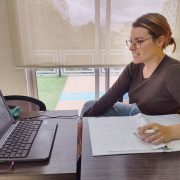5 different ways to use “como” in Spanish
Most Spanish language students find it challenging to use “como.” They get confused when traveling to Colombia and speaking to locals because of the multiple ways we use this word.
This article will explain how we use the word “como” in Colombian Spanish.
This word is frequently used as an adverb and a conjunction. However, believe it or not, we use this word in more than five different ways in Colombia!
Let’s explore some of the uses with the following sentence:
¿Cómo así que no comes como yo como sino como come Juan?
How come you don’t eat like I eat but like Juan eats?
Have you noticed this sentence has the word “como” written four times?
Well, each of these “como” words means something different….¿Cómo así? (How is that?)
Let’s go one by one
1. “Cómo” in Spanish: used for questions
“Como” when used with an orthographic accent (“cómo”), refers to an adverb. It is often translated as “how” in English. It is frequently used for questions and indirect questions.
Here are some examples of questions:
- Hola, ¿Cómo estás?
Hi, How are you? - ¿Cómo puedo comprar las boletas para concierto?
How can I get the tickets for the concert? - ¿Cómo puede ser que te hayas demorado tanto?
How can it be that you have taken you so long?
And, here are some example of indirect questions:
- No sé cómo encendió solo el televisor.
I don’t know how the TV just turn on. - ¡No sé cómo lo haces!
I don’t know how you do it!
It can be also used as “What…looks/is like?”. For example:
- ¿Cómo es tu hermana físicamente?
(What does your sister look like?) - ¿Cómo es trabajar desde la casa?
(What is it like to work from home?
2. “Como” (like, as)
“Como” also has a comparative meaning. It usually translates as “as” or “like” in English. You can use it to compare things, people, actions, etc.
Here are some examples:
- Ella baila como una Diosa.
She dances like a Godess. - ¡No hay nadie como tú!
There is no one like you! - Esta noche voy a dormir como un bebé.
Tonight I will sleep like a baby. - Mi hermana es tan alta como yo.
My sister is as tall as me. - Te quiero, pero como amigo.
I love you but as a friend.
3. “Como” (Eat; I eat)
“Como” also refers to the verb “eat,” but it is only used when it is conjugated in the first person.
Verb:
Comer (To eat)
- Yo como (I eat)
- Tu comes (You eat)
- Él/Ella come (He/she eats)
- Nosotros comemos (We eat)
- Ustedes comen (You eat)
- Ellos/Ellas comen (They eat)
For example:
- Yo como frutas todas las mañanas.
I eat fruits every morning. - Soy vegetaniano, no como carne.
I am vegetarian, I don’t eat meat. - Como aguacate todos los días.
I eat avocado every day.
These are the three most common ways to use “como” in Spanish. However, in Colombia, we have some different uses.
Let’s learn the Colombian way!
Other uses of the word “como” in Colombian Spanish
1. “Como” (about, kinda)
In Colombia, we also use “como” for approximations. It could be translated as “about”, “kind of/kinda” or “approximately.”
Here are some examples:
- Tengo como hambre…
I’m kind of hungry.. - La comida acá es rica pero está como cara, no?…
Food here is tasty but it’s kind of expensive, isn’t it?… - My perro es muy gordo, pesa como 50 kilos.
My dog is super fat, it weighs about 50 kilograms. - El hotel es como dos kilometros pasando la gasolinera.
The hotel is about two kilometres, passing the gas station. - Llevo como dos horas tratando de comprar las boletas para el concierto.
I’ve been trying to buy the tickets for the concert for about two hours.
2. ¿Cómo? (Say it again?)
In Colombian Spanish, we also use the word “como,” just like that, in the form of a question.
We use it to confirm information. For example, when we could not hear something the other person was saying, or when we want to make sure we understood correctly.
¿Cómo? is used like “Say it again?”
Learn some common expressions using the word “como”
- ¿A cómo?
It’s an expression used to ask about the price of a product or service. - ¿A cómo los aguacates? – A cinco mil pesos.
How much are the avocados? – Five thousand pesos. - ¿A cómo el alquiler de la moto? – A cien mil pesos el día.
How much is the bike rental? -One hundred thousand per day.
3. ¿Cómo así?
It’s an expression used to ask for clarification of something that has not been well understood or something that you do not want to assume.
It could be translated as: “I don’t get you, could you explain it better?”, or “How come..?/How so..?”
- Pedro no vino al colegio – ¿Cómo así? El salió temprano de la casa…
Pedro didn’t come to school today. – How come? He left home early … - ¿Cómo así? No entiendo. ¿Me explicas de nuevo?
I’m sorry, I don’t understand. Could you explain again?
4. “Como si nada”
This expression can be translated as “just like that” or “as if nothing had happened”.
- ¡No vino en dos días, y apareció ayer así como si nada…!
He didn’t come for two days, and yesterday he showed up just like that…! - Ayer discutimos pero hoy hablamos como si nada.
Yesterday we had an argument, but today we talked as if nothing had happened.
5. Sí.. ¡Cómo no…!
This expression is used sarcastically.
This expression is used when we do not believe someone’s words. It shows disbelief in the testimony or affirmation of a particular individual.
It means something like “Yes, sure…” (but with sarcasm!)
In Colombia, we even “adorn” the expression. We say “Cómo no, monito!”
Tongue Twister, “trabalenguas” with “como”
Let’s finish this article with a fun exercise!
Here is one of the most common Spanish tongue twisters. It includes a few uses of the word “como.”
It’s a great exercise to improve your pronunciation, no matter your level.
Give it a try!
Yo como como como, y tu comes como comes.
Si yo como como comes, ¿cómo comes como como?I eat like I eat, and you eat like you eat.
If I eat like you eat, how do you eat like I eat?
Come to learn Spanish with us!
We hope you have enjoyed this article.
If you want to take your Spanish to the next level, join any of our in-person or online classes. Visit our website and social media channels to see what it is like learning Spanish with us!
Don’t forget to read our monthly blog to learn more about the Spanish language and Colombian culture!
See you soon!












